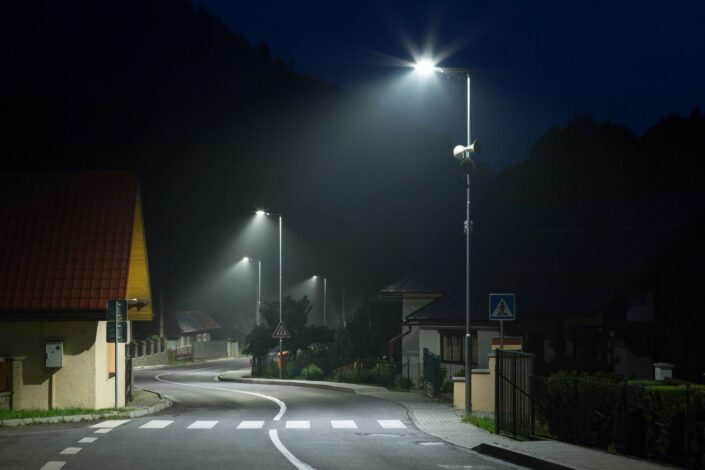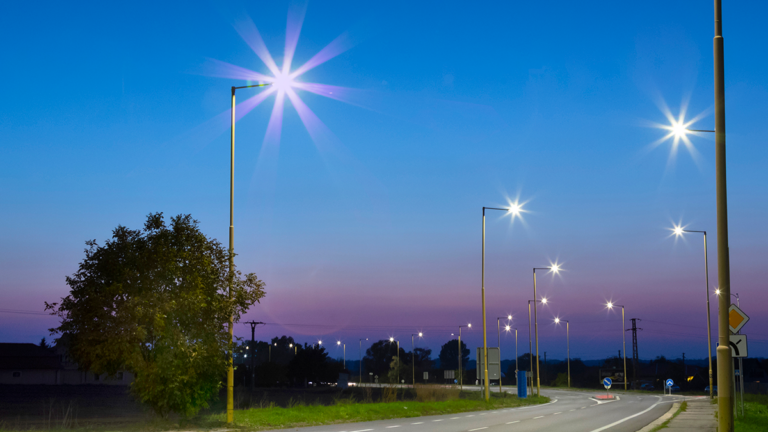To reduce costs and increase security, many cities around the world are turning to LED streetlights. This new technological advancement offers a variety of economic advantages that have been proven to benefit both municipalities and citizens alike.
From reduced energy consumption and improved lighting performance to increased safety at night and lower maintenance costs, LED street lights offer far more than just brighter streets. In this article, we will explore the many economic benefits of switching from traditional lighting solutions to LED technology.
Cost Savings of LED Street Lighting
The cost savings of LED street lighting are undeniable. LEDs use significantly less energy than traditional lighting options, resulting in significant reductions in electricity bills for municipalities. Additionally, the lifespan of LED lights is substantially longer than other options, meaning fewer maintenance costs and a much lower total cost of ownership.
Furthermore, due to their compact size and directional light output, LEDs can be used more efficiently on streets than conventional fixtures that require bulky reflectors or lenses to control light distribution. This superior efficiency leads to additional savings from reduced labor costs associated with installation and maintenance activities.
Together these factors make LED street lighting an economical choice that provides both economic benefits as well as improved safety for pedestrians and drivers alike.
Improved Visibility for Increased Safety

LED streetlights have become increasingly popular in recent years due to their potential for cost savings and improved visibility. Improved visibility on city streets can mean increased safety; more people can see clearly and identify hazards or suspicious activities, resulting in a safer environment.
LED lighting also helps drivers better distinguish between obstacles such as parked cars or pedestrians, allowing them to better anticipate any possible danger ahead of time. Additionally, LED street lighting can be used strategically by municipalities to reduce crime rates through its greater illumination power and versatility compared with traditional lighting solutions.
With the right placement of light fixtures, cities can create effective security patterns that allow police officers and other emergency personnel an easier job when responding to emergencies at night. All these features make LED lights an attractive option for municipalities looking to improve safety while cutting costs at the same time.
Environmental Benefits of LED Technology
LED technology not only offers economic advantages but also provides environmental benefits. LED lights are more energy-efficient than traditional street lighting solutions, requiring up to 75% less power consumption.
This translates into fewer emissions of carbon dioxide and other pollutants that contribute to climate change. Additionally, LED lights last significantly longer than conventional bulbs – with a life expectancy of up to 70,000 hours compared to 1,000 for incandescent lamps – meaning they need replacing far less often.
This reduces waste as well as labor costs associated with maintenance and replacement so it’s good for the environment in multiple ways. Furthermore, LED lighting produces very little heat which means no additional cooling is required; again saving on energy use and improving air quality by reducing the amount of pollution released through these processes.
Economic Benefits from Lower Maintenance Costs

The economic advantages of LED streetlights are clear. Not only do they require less energy to operate, resulting in lower electricity bills for businesses and residences alike, but the maintenance costs associated with them are significantly lower than traditional lighting systems.
The reduced frequency of maintenance required is beneficial from a financial perspective; not only does it mean fewer man-hours spent on upkeep, but it also reduces the number of resources used to maintain them since LED bulbs last longer than traditional ones. This means that businesses can save money by reducing their spending on repair or replacement costs and instead focus those funds on other areas such as expansion or employee benefits.
Additionally, LED streetlights are more reliable and durable than conventional lighting solutions – meaning fewer outages due to weather changes or power surges which can impact business operations if left unaddressed. Finally, municipalities across the world have seen substantial savings when switching from older forms of outdoor lighting to LEDs – making this technology an attractive option for many cities wanting to control their budgets while still providing safe streets at night.
Conclusion
The implementation of LED Street Lights has provided economic advantages for many cities across the country, through reduced electricity consumption and maintenance costs. The advanced lighting technology offers superior brightness and longevity compared to traditional street lights, while also providing an improved quality of light that can help increase nighttime visibility for drivers and pedestrians alike.
With such a wide range of benefits, it is no surprise that so many cities have made the switch to LED Street Lights in recent years.

